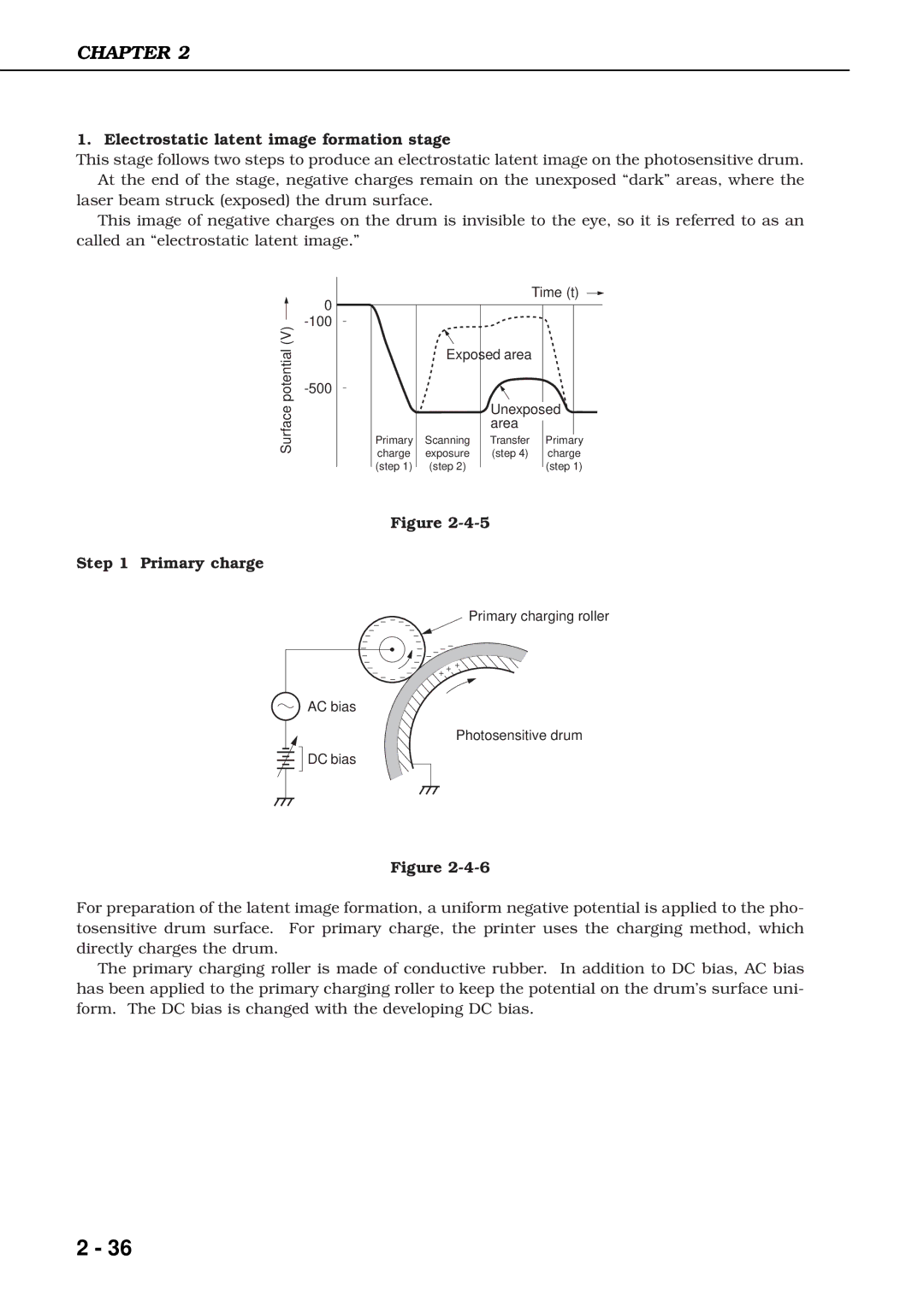
CHAPTER 2
1. Electrostatic latent image formation stage
This stage follows two steps to produce an electrostatic latent image on the photosensitive drum. At the end of the stage, negative charges remain on the unexposed “dark” areas, where the
laser beam struck (exposed) the drum surface.
This image of negative charges on the drum is invisible to the eye, so it is referred to as an called an “electrostatic latent image.”
Surface potential (V)
0
Time (t)
Exposed area
Unexposed area
Primary | Scanning | Transfer | Primary |
charge | exposure | (step 4) | charge |
(step 1) | (step 2) |
| (step 1) |
Figure
Step 1 Primary charge
Primary charging roller
![]() AC bias
AC bias
Photosensitive drum
DC bias
Figure
For preparation of the latent image formation, a uniform negative potential is applied to the pho- tosensitive drum surface. For primary charge, the printer uses the charging method, which directly charges the drum.
The primary charging roller is made of conductive rubber. In addition to DC bias, AC bias has been applied to the primary charging roller to keep the potential on the drum’s surface uni- form. The DC bias is changed with the developing DC bias.
2 - 36
